
How to turn your rough first drafts into wallet-opening copy your cutomers love.
You don't need to be a great writer to write great copy. You just need to know how to edit your rough drafts into something much stronger.

We’ll level with you: writing copy is hard.
And writing good copy? Even harder.
(It’s a tad easier if you get weekly tips and tricks straight to your inbox though, right? 😉)
Good copy has to do a lot of heavy lifting. It doesn’t just have to flow and sound nice, it also has to:
👉 Drive people to action
👉 Be on-brand and in your voice
👉 Address your customers’ pain points
👉 Hold your customers’ attention
👉 Emphasise your brand’s USPs
That means whenever you’re writing a piece of copy, you’re spinning a shit load of plates all at once. And when you’re properly in the zone, it’s easy to let a few smash without even noticing.
That’s where editing is your new best friend.
(👆️Trust us, you wouldn’t want to see our first drafts. They’re a mess.)
Doing your final edit is about way more than just catching typos and adding in a few missed commas. It’s about making sure your copy does everything in the list above.
But when you’ve written your own copy, you’re a bit too close to it to be able to see where you can make it better. You know what you were trying to do with it. You know what each sentence — each word, actually — is trying to achieve.
So when you start editing, you nod along, fix a typo here or there and then pat yourself on the back and start browsing for a “World’s Best Writer” plaque for your desk.
But, in reality, all you’ve seen is what you want the copy to be doing, not what it’s actually doing.
And you’re not alone. We all do it 👇
🧠 When we edit our own writing, we overlook errors because of the IKEA effect (yep, that IKEA). This psychological bias gives us a much higher opinion of what we’ve created (or helped create), just because we made it. So when we write, we become attached to our words and overvalue them, which makes it bloody hard to spot anything that needs tweaking, changing or scrapping completely.
That’s why getting some distance from your copy and reading it like it was written by somebody else are game-changers.
According to a study by Adobe, having a website that’s easy to read increases the amount of time customers stick around by 40%.
Now, the best way to do it is to get someone else to give it a read. But if you’re a small team, you probably haven’t got a dedicated proofreader handy. So how do you get the distance you need to be able to edit your own copy?
Here’s how we do it 👇
Step 0: Sit back, relax and do sweet FA (trust us, it’s science)
Yep, you read that right. When you finish writing whatever you’ve been working on, close your laptop and do nothing.
Nada. Zilch. Niente.
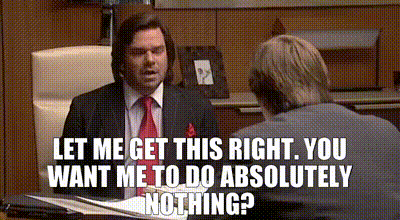
It’s only when you let yourself get some mental distance from the copy that you see the bigger picture, spot the things that need changing or tweaking and ask important questions like “does this really talk to the audience?” or “is this written in our brand voice?”.
This might sound like a load of BS but there’s solid science behind it. Research from the University of Southern California shows that stepping away from a task for little while massively improves our ability to spot mistakes and areas for improvement.
Put simply, when you take a break, your brain resets. You create distance from your copy, which means you come back to it with fresh eyes and a more objective perspective.
(And that’s exactly what you need for editing. And a pretty good excuse to put your feet up.)
It’s what we do between drafts and we’re not the only ones 👇
📚 Stephen King swears by this technique. When he finishes a novel, he lets it sit for weeks or even months before going back to edit. This break helps him see his own writing more clearly—what’s working, what’s not, and where he can improve. And while you’re probably not crafting the next The Shining, this approach works just as well for a blog post, Instagram caption, or sales page.
PS. Looking for a Christmas present for yourself? On Writing by Mr King is an absolute banger.
So when you finish a draft, do absolutely anything else. Take a walk, start reading that book that you’ve never got time for, go for a pint with a mate… do anything but even look at your work.

⏲️ The 48-Hour Rule
Make your draft as good as you can get it.
Forget it exists for a few days.
Come back to it with a clearer mind and start editing.
On a deadline? You can speed this process up by doing another creative task between finishing and editing to get yourself into a different headspace.
When you come back to your copy after a break, you’ll spot things you never noticed before.
That clever phrase you thought was brilliant? Turns out it’s actually a bit confusing.
The point you absolutely loved? It now reads a bit redundant.
By stepping away, you’ll be ready to edit with a more objective POV.
And that’s where the magic happens.
From there, all you need to do is follow our super-simple 5-step editing process and you’ll be able to turn decent v.1s into “holy shit, I’m good” final drafts.
And then you’ll be able to order that World’s Best Writer plaque.
Step 1: Double-check that all of your copy is crystal clear
The last thing you want customers to think when they read your copy is “Wait, what does that mean?”.
(Most customers won’t read sentences twice to fully understand them. They’ll just bounce.)
Now sometimes, unclear copy is just the result of not having had your morning coffee. Those fixes are usually dead simple.
Other times, unclear writing comes from trying to add words and jargon that you feel you need to include (to fit in with your competition, to appease your boss, etc…) rather than just saying what you mean.
But put those external expectations to one side for now and just focus on making sure customers can skim your content and get it instantly.
Why? Because being as clear as possible is THE KEY to good copy.
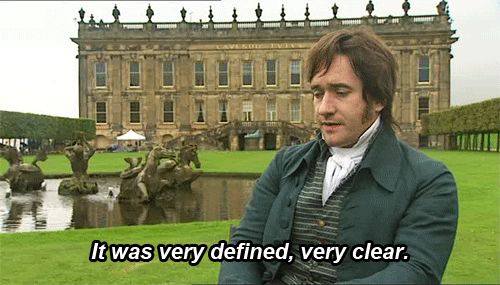
If you make it easy AF for your audience to understand what you’re saying and what you mean, they’ll stick around to read more. Then you can work on ways to sell to them.
But copy that doesn’t get read, doesn’t sell.
Ask yourself:
👉 Is what I’m saying as clear as it can possibly be to the reader?
👉 Could I make it any clearer?
👉 Are there any parts that are confusing or otherwise just a little muddled?
👉 Am I using insular language that the customer won’t immediately understand?
👉 Am I writing in Plain English at Grade 6 or 7 reading level? Use the Hemingway app to check.
🧠 Big ideas don’t need big words: Speaking in Plain English at a Grade 6 or 7 level isn’t talking down to your audience. It’s respecting their time and letting them get your brand faster.
Plus, in a blind study of 800 lawyers and judges – pretty smart people – Plain English legal documents were found to be far more persuasive than their legalese, jargony counterparts.
Here’s three ways to make sure your copy is crystal clear
Get specific
Vague statements feel like you’re selling, but they lack any real impact. Being specific makes your message easier to grasp and more persuasive 👇
❌ “Our software saves time”
✅ “Finish your tax return in under 10 minutes.”
Ditch the jargon
You live and breathe your product all day long, so it’s easy to let some inside baseball language slip through the net. Make sure you catch any bits of jargon that would trip your customers up and swap it out for how you’d explain things to a mate over a coffee.
❌ Our app has an advanced WTFDTM interface to boost efficiency.
✅ Track your team’s progress in real time with your own live dashboard.
Cut the fluff
You’ve got seconds to make a good impression, don’t waste it with unnecessary adjectives and adverbs that weaken your message. Simpler is always better 👇
❌ “Our expertly crafted, luxurious skincare serum is formulated with cutting-edge technology to deeply nourish and rejuvenate your delicate skin like never before.”
✅ “Get smoother, glowing skin with our deeply nourishing serum.”
Clear copy doesn’t just help your audience understand everything even if they’re skimming, but it also builds trust in your brand. The Plain English Institute found that 84% of people are more likely to trust a company that uses jargon-free language in its communications.
Even better, by making your language clear, you let customers spend less time figuring out what you’re selling and more time deciding whether to buy. Win win.
Step 2: Check that your copy sounds like your brand (and only your brand)
Now you’ve got your messaging clear, it’s time to make it on-brand.
Your brand’s voice is what makes your copy unmistakably yours.
It’s not just about what you say—it’s about how you say it. A distinct brand voice builds trust, creates a connection, and makes your copy feel human. (Not to mention, a consistent brand voice can boost revenue by 23%)
Think of your voice as your brand’s personality in words. When you go through your copy ask yourself:
👉 Does it sound like you?
👉 If your logo was taken away, would people know these words were written by your brand?
👉 Is it packed full of your brand personality?
👉 Do the words you’re using and the stuff you’re saying match up with your brand values and identity?
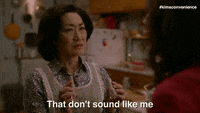
If the answer’s no to any of those questions, you’ve got some editing to do 👇
Read your copy out loud.
Reading aloud forces you to slow down and read what you’ve actually written (not what you thought you’d written) and find areas where you can improve the flow and tone.
❌ “Our premium coffee subscription delivers a superior experience for coffee enthusiasts.”
✅ “Love great coffee? Sign up and we’ll bring the best brews straight to your door.”
Highlight anything that sticks out like a sore thumb.
As you’re reading the copy out loud, highlight or underline anything that doesn’t sit quite right. Then go through and update it to sound like you’re having a chat about it with a friend or member of your team.
❌ “Our skincare range supports healthier skin for individuals of all types.”
✅ “Skin acting up? Our products have got your back—and legs, and arms, and face covered.”
Get rid of any boring phrases and clichés.
One of the easiest ways to blend in as a brand is to use the same phrases that your customers see on every site. By switching out those run of the mill phrases with more personality-packed copy, you’ll stick in their minds way longer.
❌ “We provide excellent service,”
✅ “Customer service so good, you’ll want to send us a thank-you card.”
🧠 The Von Restorff Effect: we’re hardwired to remember things that stand out. In fact, we’re more likely to focus on and remember things that break from the usual.
90-odd years ago, Hedwig von Restorff (what a name!) discovered that the best way to be noticed and remembered was to be distinctive, unique and individual. (However, a few years ago, a study found that 54% of all brands’ word choices were identical to their competitors.)
Consistency is key when you’re writing copy for your brand.
From product pages to delivery updates, every piece of copy should feel like it was written by the same brand. Innocent Drinks nail this, even using their distinctive voice in areas most brands would play it safe, like their modern slavery statement.
Step 3: Give your audience a reason to care
Even if your product turns rubbish into gold bars, most customers are still going to close the tab if you don’t show them why they should care.
Great copy doesn’t talk about itself, it talks about the customer and connects the dots between what you’re offering and how it helps them.
That’s why, with everything you write, you should be speaking directly to their needs, desires, and pain points.
With that in mind, do another run-through of your copy and imagine your reader is a stroppy teenager. You’ve just told them something and they’re looking at you with that “yeah, and what?” look on their face.
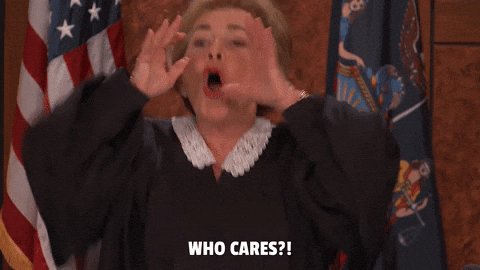
It’s your job to make sure your copy does everything it can to make sure that they can’t say “so what?” after they’ve read it.
👉 Make sure you’re focusing on how you help your customers.
Does your copy really hammer home the end benefit for your audience? Does it focus on how it makes their life better and not on what your product is or does?
❌ “Our app organizes your files.”
✅ “Spend less time searching and more time focusing on what matters.”
👉 Tackle your audience’s objections before they even have a chance to think about them.
Think about what might make your audience think twice and address it head on.
❌ “Our workout gear is made of the best materials.”
✅ “Built to last through 1,000 washes, so you only buy it once.”
👉 Write as if your audience is one person.
Imagine you’re writing your copy for one person rather than a big, vague group of customers and speak directly to that person.
❌ Makes morning routines quicker
✅ Makes your morning routine quicker.
🧠 Use the five whys approach:
When you’re writing copy, ask yourself “why should I care?”. Then keep asking yourself that same question as you write new variations until you get down to the core benefit for your customers. Let’s see it in action 👇
We sell fair trade coffee beans. Why should I care?
Our coffee beans are ethically sourced. Why should I care?
Our coffee beans support the farmers that grow them. Why should I care?
Every cup of our coffee helps create a fairer world. Why should I care?
At this stage, it’s time to make your benefits more tangible. Move away from facts and focus on feelings to really drive it all home.
Pour yourself a morning brew knowing you’re making the world a fairer place.
(Tangible verb to start? 👌 Specificity with “morning brew”? 👌 Mission-focused why? 👌)
Boom. Now you have a really decent headline and you’re silencing that moody teenager.
Step 4: Remove any customer objections with solid proof
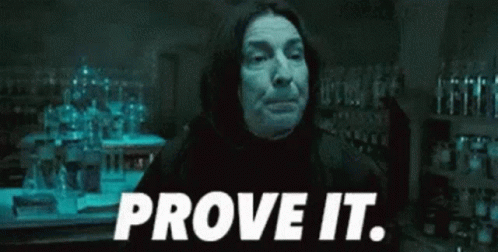
Embrace your inner stroppy teenager mode again (or go sassy Snape mode 👆) and do another run through your copy. Are you making any claims that need backing up?
A quick scroll through Instagram is all it takes to see that every brand is shouting how their product is the best, so it’s no surprise that audiences are naturally skeptical. (This November 2024 study shows that customers want truth, transparency and openness from brands, not just bragging.)
Let’s go back to the coffee brand in the last step. In that copy, we claimed that our coffee supports the farmers that grow it, but without any proof, our audience will think we’re bullshitting them.
So we need to back it up with some trust signals like a third-party accreditation to show we actually do what we say.
But that’s not all. We also need to show that other customers like our products too. (Because nobody wants to drink shit coffee, even if it does help farmers.)
So if you’ve got any kind of social proof (customer testimonials, etc…) that you can whack into the copy, any kind of reviews or stats you can include, this is the time to add them in.
As you’re going through your copy, listen to the stroppy teenager and if you think “prove it” at any point 👇
👉 Add social proof.
People trust people. Highlight reviews, ratings, and testimonials to show that others already trust you.
❌ “Our skincare routine works wonders for all skin types.”
✅ “Loved by 10,000+ glowing customers ⭐⭐⭐⭐⭐”
If you don’t have large numbers of reviews, make the social proof more personal. Don’t say “loved by 17 people and our mum”. Pull a really decent quote from a review and highlight that instead!
👉 Include hard data or specifics.
Numbers speak louder than adjectives. Add some statistics or percentages to show why they can trust your products.
❌ “Our laundry detergent is super effective at removing stains.”
✅ “Removes 99% of tough stains on the first wash—tested and proven.”
👉 Show off your accreditations and awards.
If you’ve got industry awards, certifications, or third-party endorsements, use them to build credibility.
❌ “Our coffee is high quality and sustainably sourced.”
✅ “Proudly certified by Fair Trade and voted ‘Best Coffee Brand 2024’ by Coffee Lovers Magazine.”
🧠 The Bandwagon Effect — People trust what other people trust. By showing your customers that other customers already love what you offer, you’re tapping into the bandwagon effect and giving your customers that nudge they need to trust you too.
Step 5: Make an emotional connection with your customers
When you’re trying to cram in all the benefits, social proof and personality into your copy, it’s easy to forget about making an emotional connection.
But emotion is the number one driving force behind most of our decisions. Research from Harvard Business School reveals that up to 95% of purchasing decisions are subconscious and based on emotion, not logic.
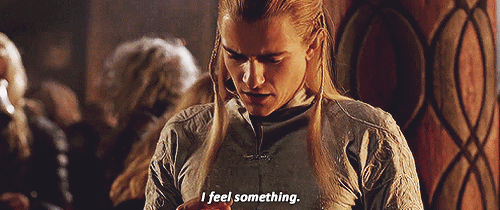
So do another run through your copy and check:
👉Are you using emotionally-charged words?
👉Are you painting a picture (with specifics) that elicits the emotional response you want?
👉Are you inspiring any emotion at all?
👉 Are you talking to your customer about THEM and not your product?
If not, here’s how to fix it👇
Paint a picture for your customer.
Get descriptive. Don’t just tell them what your product does; show them how it’ll make their life better.
❌ “Save time with our app,”
✅ “Reclaim your mornings and enjoy your coffee without rushing.”
💡 Pro tip:
If you’re selling something that saves customers time, use words that empower them (reclaim, take back, etc…).
If you’re selling something that’s for them to enjoy, use tactile words. (Sip, savour, tuck into…)
If you’re selling something mission-focused, use community-focused words. (Be part of, be the change, help make the world…)
Tap into your customers fears and desires.
What’s keeping your customers up at night? What are they daydreaming about during their lunch break? Use your copy to show you understand their struggles and goals—and then position your product as the solution.
❌ “We offer 24/7 support.”
✅ “Breathe easy knowing help is just a click away, any time you need it.”
Make your customer the hero of the story.
Think of your brand like Gandalf, not Frodo. You’re there to help them succeed, not to take all the glory. So focus on how their life, work, or adventures will improve when they choose your brand.
❌ “Our hiking boots are durable.” (All about you.)
✅ “Conquer every trail with boots built to last—and take you further.” (Selling a better version of them.)
✋ Don’t go overboard. Appealing to your customers on an emotional level is a great way to connect with them but going too far takes you from Gandalf to a door-to-door salesperson.
Too much emotive copy feels like you’re overpromising and your customers will start to think it’s all BS.
A study by the Journal of Consumer Research found that when consumers detect persuasive intent in emotional appeals, it can have the opposite effect of putting the customer off the brand.
On top of that, a study from the Journal of Advertising Research found that using emotional copy makes it more impactful and memorable, but also leads to customers becoming skeptical if there’s no proof to your claims. (So make sure you back them up!)
TLDR: Your first draft is like baking a cake. Editing it is like decorating it.
Here’s a handy checklist for following our tried-and-tested way of proofing and editing your own copy 👇️
- Close your laptop. Seriously: take a break to get a bit of distance from the copy and see it with fresh eyes.
- Be clear over clever: more than anything, make sure your message is simple, easy-to-understand, and free of jargon.
- Dial up your brand voice: check to make sure every word sounds unmistakably like your brand. Add some sprinkles of personality if it feels a little generic.
- Speak to your customers: Make sure you’re not just waffling about your product. Flip as many sentences as you can to be customer-focused.
- Back it up: Double-check your copy passes the sniff test by backing up your claims and adding social proof.
- Sell with feelings, not just facts: Triple-check that your copy makes your customers feel something, rather than leaving them cold.
Editing your own copy — especially cutting those sentences you absolutely loved while writing — is never easy, but it can make the difference between OK-ish copy and really, really good copy.
And the good news is that the more you edit your copy, the better your first drafts will be. It’s like being your own copywriting teacher.
(Proof we live by these words: this is version 3 version 4 of this article.)
Dive into free tips and tricks 👇
Read more copy tips and tricks

How to nail the bad review trend (and increase ad CTR by 27%)










